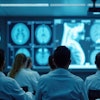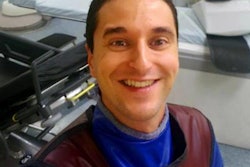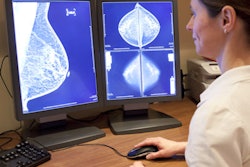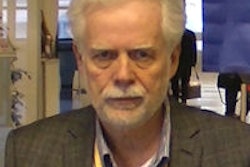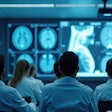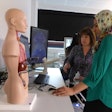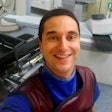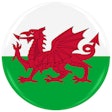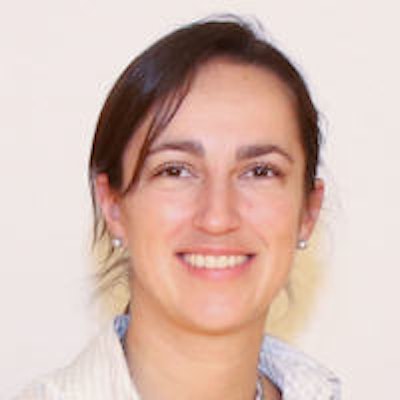
Trainee and newly qualified radiologists have nothing to fear for their professional future provided they continue to subspecialize, invest in themselves, and are willing to travel more to find work. That's the view of Dr. Viola Koen, chairperson of the European Society of Radiology's (ESR) Radiology Trainees Forum (RTF).
Anxiety that other specialties will eventually take over large areas of radiology is unfounded, given the radiologist's central role in patient care and the added value and knowledge provided, she said. Furthermore, radiologists may also have to travel more to find jobs in the years ahead; a lack of available posts in certain European countries may be balanced by a surplus of positions in others -- meaning that in the mid to long term, increasing numbers of newly qualified radiologists could start their careers outside their home countries.
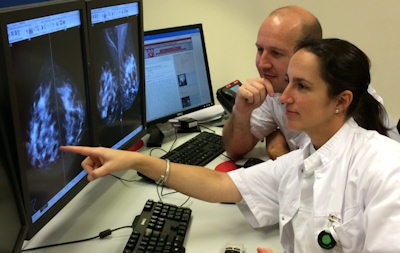 Young radiologists should subspecialize early to ensure that deep knowledge of their discipline keeps them ahead of the game, said RTF Chair Dr. Viola Koen, shown here discussing a breast case with a radiographer colleague.
Young radiologists should subspecialize early to ensure that deep knowledge of their discipline keeps them ahead of the game, said RTF Chair Dr. Viola Koen, shown here discussing a breast case with a radiographer colleague.In an interview with AuntMinnieEurope.com, Koen stressed that in-depth expertise makes the imaging specialist indispensible, despite a growing trend of nonradiologists looking at medical images within the remit of their work.
"Although with digitalization and cheaper ultrasound machines radiology is becoming more accessible, no other specialty has as much in-depth imaging-specific knowledge, nor can others write the reports, coordinate with the radiographers about the technical issues, design protocols and define parameters, or have a hand in the management of radiology," said Koen, trainee radiologist specializing in breast imaging at the Kennemer Gasthuis in Haarlem, the Netherlands. "If young radiologists want to remain an effective medical partner though, they need to know everything about their subspecialty."
Looming threat of unemployment
With draconian austerity measures in place across much of Europe, finding jobs may present the trainee and young radiologist with unexpected challenges. In the Netherlands, for example, there are too few openings in imaging departments compared with the numbers of candidates. In her country, the current estimate is an unemployment figure of 40 radiologists, which is expected to increase to around 200 in the next five years, she explained. Several of her Dutch peers have already found work in the U.K., France, Denmark, and Germany, where radiology posts are more abundant and there has also been an increase in the number of exchange programs.
To ensure this kind of migration becomes more feasible, the ESR has created the European Training Curriculum for Radiology to make radiology training more homogeneous across member states in terms of length and content. For instance, while in the Netherlands, training takes a minimum of five years, in some east European countries specialization takes two to three years, and may also only involve one modality such as conventional x-ray. The curriculum is updated periodically -- the last time was in February 2014 -- so that it remains in line with the latest developments.
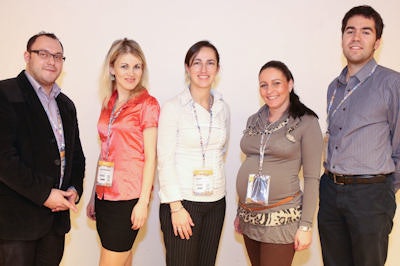 The board of the Radiology Trainees Forum. From left: Secretary Dr. Costin Minoiu, Vice-Chairperson Dr. Nadya Pyatigorskaya, Chairperson Dr. Viola Koen, Public Relations Officer Dr. Marijana Basta Nikolic, and Research Officer Dr. Pablo Rodríguez Carnero. The Chairperson of the ESR Education Committee is Dr. Birgit Ertl-Wagner, professor of radiology, who is not shown here. Image courtesy of ESR.
The board of the Radiology Trainees Forum. From left: Secretary Dr. Costin Minoiu, Vice-Chairperson Dr. Nadya Pyatigorskaya, Chairperson Dr. Viola Koen, Public Relations Officer Dr. Marijana Basta Nikolic, and Research Officer Dr. Pablo Rodríguez Carnero. The Chairperson of the ESR Education Committee is Dr. Birgit Ertl-Wagner, professor of radiology, who is not shown here. Image courtesy of ESR.University hospitals and other training centers can be assessed by ESR for their radiology training programs through the ESR's European Training Assessment Program (ETAP), in which ESR representatives will visit the site to check, amongst other criteria, that the program conforms to its curriculum for length and content.
"Since 2001, when ETAP was established, there have been increasing numbers of requests for these ETAP visits" Koen said. "In line with this, a growing volume of trainees are taking the European Board of Radiology's (EBR) European Diploma in Radiology (EDiR) to guarantee the standard of their radiological knowledge ahead of any exchange programs. Registration for each exam scheduled across Europe is mostly full weeks in advance. The last EDiR examination of 2014 took place in Antalya, Turkey, in November, and the first of 2015 will be during ECR in Vienna in March."
Investing for the future
Trainees hoping to sit the diploma can also attend the European School of Radiology's (ESOR) courses for EDiR; these special training days throughout the year aim to cover the key subspecialties. Three cycles of courses at different times a year are organized at the ESR Learning Center in Barcelona, Spain. The format includes two to three one-day modules in each cycle, each module dealing with a specific organ/system-oriented theme. The diploma is based on the European Training Curriculum, and is usually taken in English, although in several countries such as France, Poland, Spain and Turkey the oral examination can also be taken in the country's official language.
English is a necessity for any trainee radiologist, given the dominance of English language textbooks and journals, but those finding work in other countries such as Denmark, France, and Germany will also need fluency in that language as well, Koen noted.
Trainees should check out the ESOR's eLearning and online applications, according to Koen, who was keen to flag up educational and professional support for future and young imaging professionals. Online ESOR courses are available for a monthly fee. In addition, ESOR offers a variety of scholarships for radiologists-in-training that aim to support an early interest in subspecialization among trainees. These scholarships primarily target residents in their 3rd, 4th or 5th year of training and cover accommodation and travel expenses.
Looking ahead to ECR 2015, trainees who applied and were accepted for the Invest in the Youth Program will benefit from free attendance for the full five days of the congress and an accommodation voucher worth 350 euros. For those who missed the October deadline this year, there is always next time, Koen pointed out. To apply for the 2016 program, trainees need to be ESR members, submit a scientific or educational poster or paper abstract, and fulfill the age criteria of being younger than 35 if radiology residents and younger than 30 if trainee radiographers.
ECR 2015 is likely to prove fruitful ground for residents and newly qualified radiologists, given the number of congress sessions dedicated to the young imaging professional. The RTF Highlighted Lectures, which provide 1.5 hours of lectures aimed specifically at trainees, are likely to prove popular. For the second year running, there will also be the RTF quiz owing to its great success last year, according to Koen. Trainees taking part in this interactive and educational quiz in the Rising Stars' Lounge can assess their knowledge and win various prizes. For more information about relevant sessions, trainee radiologists and medical students with an interest in radiology can select suitable lectures by consulting the ECR 2015 program, which indicates each session's level in terms of the European Training Curriculum.
